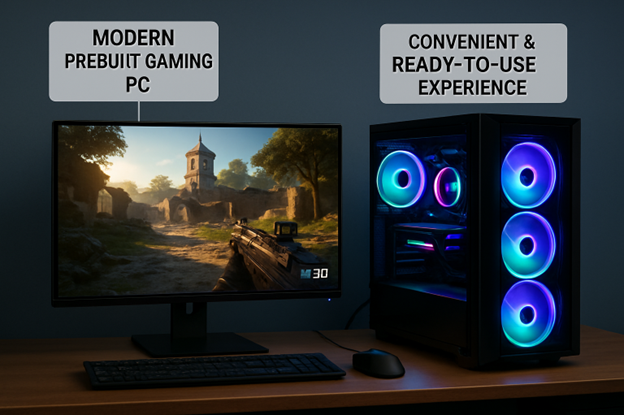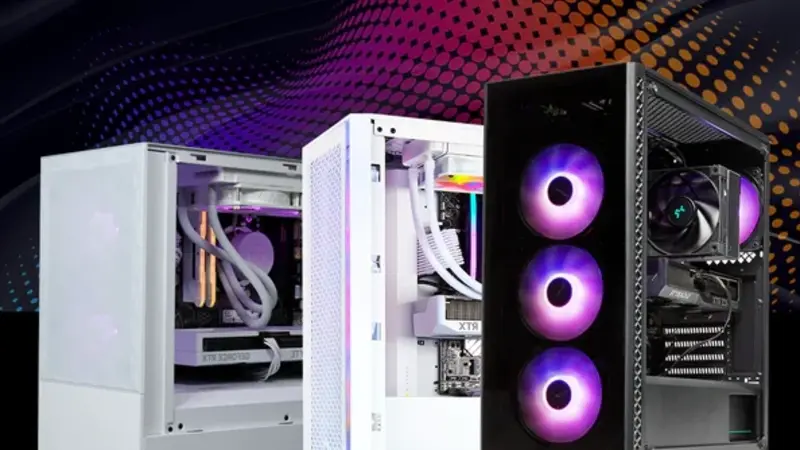In the evolving world of technology, prebuilt gaming PCs have redefined what home computers can offer. What was once exclusive to enthusiasts and hardcore gamers is now a mainstream solution for users needing high-performance machines without the complexities of custom builds. The rise of prebuilt options represents a significant evolution, weaving convenience, power, and value into the fabric of the modern home computing experience.
Consumers increasingly embrace prebuilt gaming PCs for immersive gameplay and professional workloads that demand speed and reliability. These systems, assembled by specialized manufacturers, eliminate the guesswork and risk involved in component compatibility, providing peace of mind and powerful performance right out of the box. This broadening appeal drastically changes expectations for what a home computer can do.
Key Takeaways
- Prebuilt gaming PCs provide a hassle-free, high-performance computing experience.
- They offer competitive pricing and reliable warranty support.
- Advancements in technology have enhanced their appeal to a broader audience.
Convenience and Time-Saving
Building a PC from scratch can be daunting and time-consuming for many people. Prebuilt gaming PCs remove these barriers, delivering a system that is expertly assembled, tested, and ready to perform straight out of the box. There’s no need to spend hours researching components, troubleshooting compatibility issues, or worrying about cable management and safe installation. This advantage resonates especially with users who need a hassle-free, high-performance machine quickly, whether for gaming, content creation, or other demanding tasks.
The quick setup and seamless integration offered by prebuilt gaming PCs make them an appealing option for busy professionals and students. Users can unbox and start working or gaming within minutes rather than waiting days or weeks to assemble a system and iron out potential issues. This streamlined experience is one of the primary drivers behind their widespread adoption.

Reliability and Warranty Support
Prebuilt gaming PCs often come with standardized warranties and dedicated support teams, offering coverage and guidance in case anything goes wrong. This level of reliability is significant for users who don’t want the stress of managing multiple independent warranties from component manufacturers. Should a hardware failure occur, one point of contact and an explicit service agreement ensure fast solutions and minimal downtime. Comprehensive service packages, such as on-site repair or advanced replacement, provide further peace of mind, especially for those using PCs for critical daily tasks.
Many major PC manufacturers and system integrators have refined their support networks, which now rival the level of customer care once only found in enterprise IT solutions. The dependability of these support systems is pivotal, making prebuilt gaming PCs a dependable foundation for modern home offices and gaming setups. For more on warranty trends in consumer electronics, see this piece from The New York Times.
Competitive Pricing
One of the main misconceptions is that prebuilt gaming PCs always cost more than their custom-built counterparts. In reality, manufacturers save costs by purchasing components in bulk, optimizing assembly lines, and minimizing waste. These efficiencies translate into competitive consumer pricing, often making high-performance PCs more accessible to a broader range of users.
Prebuilt options can provide better value and availability during component shortages or volatile prices than purchasing individual parts yourself. Additionally, manufacturers frequently offer bundled deals with accessories, software, and discounts, further enhancing the overall value proposition of prebuilt systems in the modern marketplace.
Technological Advancements
The leap in hardware technology over recent years has drastically improved the capabilities of prebuilt gaming PCs. Leading manufacturers integrate the latest high-end CPUs and GPUs capable of ray tracing, advanced graphics, fast NVMe SSDs, and next-generation memory into their systems. This commitment to using advanced components means prebuilt systems are now viable for serious gamers and users engaging in video editing, 3D rendering, VR, or sophisticated AI tasks.
These advancements are supported by trends such as quieter cooling solutions, striking aesthetics with RGB lighting, and robust upgrade paths. As a result, prebuilt gaming PCs are increasingly seen as future-proof investments. PCMag’s overview of top desktop computers highlights how, thanks to these developments, the line between gaming rigs and professional workstations continues to blur.
Impact on Home Computing
The influence of prebuilt gaming PCs extends beyond gaming enthusiasts and into the mainstream home computing environment. As these high-powered systems become the new standard, software developers are empowered to create more resource-intensive and feature-rich applications. This progress, in turn, raises the baseline for what typical households expect from their computers, fueling further hardware innovation and accessibility.
Home users now enjoy systems that support remote work, online school, advanced multimedia projects, and next-gen gaming. The ‘one-PC-fits-all’ trend is speeding up, transforming home offices and family spaces. This shift makes advanced technology accessible to more people. It also prepares households for a digital future powered by cloud services, smart devices, and immersive entertainment.
Choosing the Right Prebuilt PC
Selecting a prebuilt gaming PC involves evaluating several key factors beyond just technical specifications:
- Performance Needs: Identify the computing tasks you need to run, whether AAA gaming, professional creative work, or multitasking. Choose a system that is well-matched to these requirements.
- Budget: Set a realistic budget and compare models to find the highest value within your range, ensuring you don’t overpay for unused performance or features.
- Upgradeability: To maximize the longevity of your investment, consider systems that offer easy access to internal components for future upgrades, such as additional storage, RAM, or GPU swaps.
- Brand Reputation: Research reviews and ratings of different manufacturers, focusing on customer service, build quality, and warranty response times. Established brands with proven track records generally provide more reliable products and support.
Considering these factors ensures a superior home computing experience that balances performance, cost, and long-term satisfaction.
Also read: Thejavasea.me Leaks AIO-TLP287: A Comprehensive Guide
